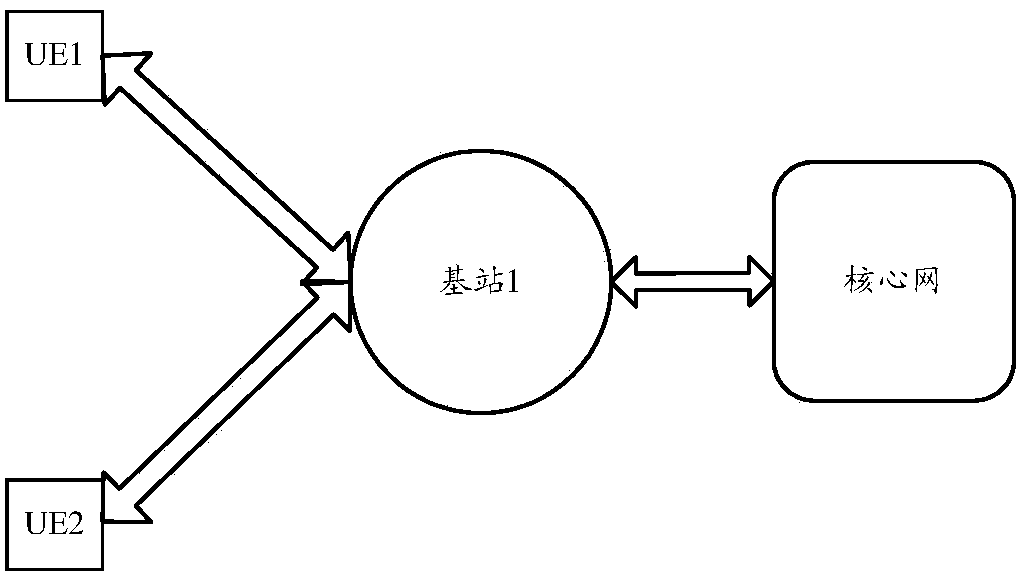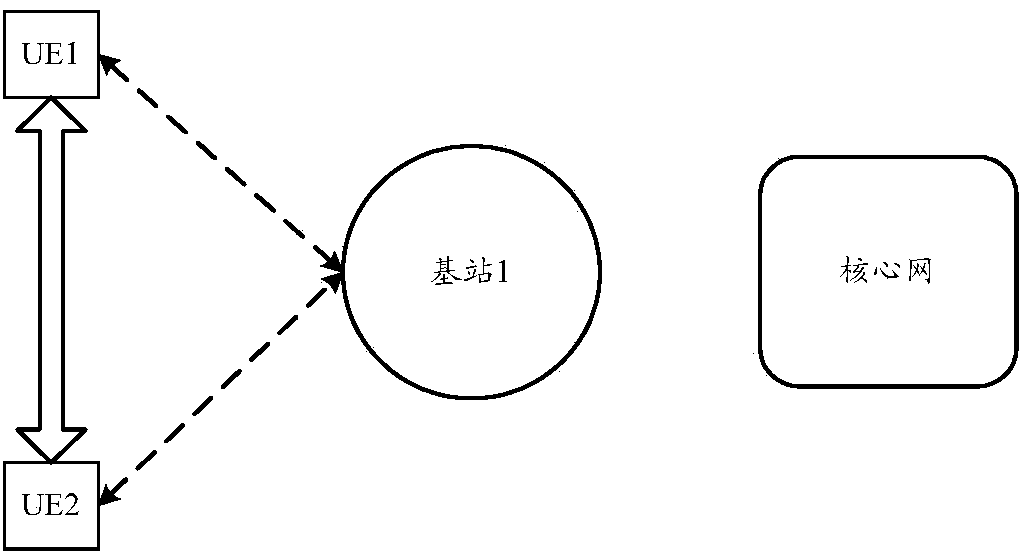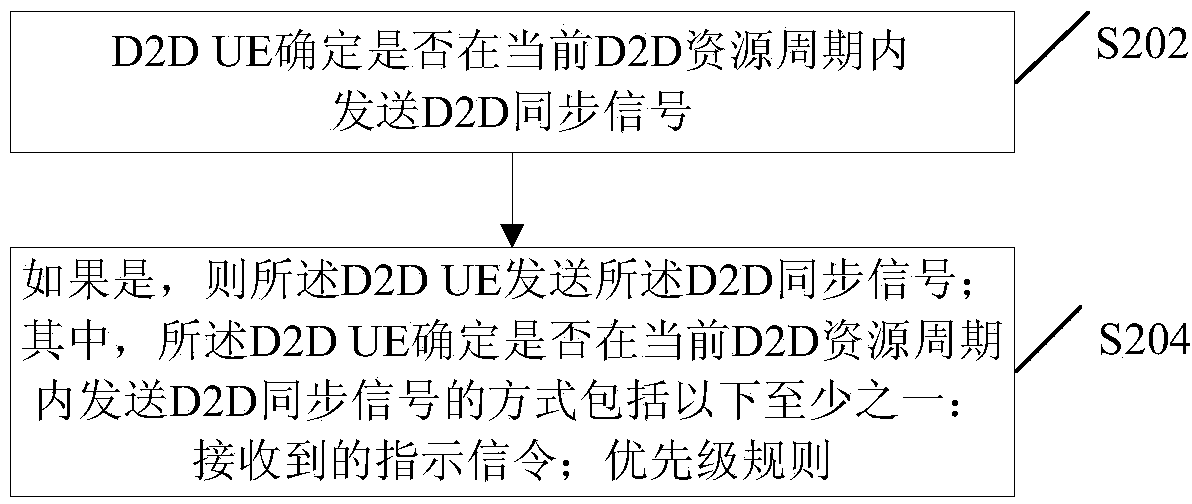D2D communication method and device
A communication method and technology of a communication device, applied in the field of communication, can solve the problem that D2D UE cannot realize timing synchronization and the like
- Summary
- Abstract
- Description
- Claims
- Application Information
AI Technical Summary
Problems solved by technology
Method used
Image
Examples
Embodiment 1
[0139] A simple way to realize the D2D UE sending a synchronization signal is equivalent to that in the received indication signaling, N is 1, and the sending offset is 0. That is, all D2D UEs in the cell send D2D synchronization signals by default, that is, D2D UEs send D2D synchronization signals on fixed resources in each D2D resource period. In addition, all D2D UEs in the cell send the D2D synchronization signal based on the same sending timing assumption, and a combining gain can be formed on the side of the receiving UE.
[0140] For a synchronously deployed network, the synchronization timing between adjacent cells is strictly aligned, and the D2D resource areas of adjacent cells are also aligned. However, for an asynchronously deployed network, the synchronization timing between adjacent cells is not aligned, and the D2D resource areas of adjacent cells may be aligned or may not be aligned. Therefore, the D2D synchronization signal may interfere with the D2D signal o...
Embodiment 2
[0143] The received indication signaling includes the parameter N and the transmission offset. All D2D UEs in the cell transmit the D2D synchronization signal according to the D2D synchronization signal transmission period of N times the D2D resource period. N is a positive integer. In each D2D synchronization signal transmission period , each D2D UE sends a D2D synchronization signal once. Each D2D UE sends a D2D synchronization signal in a D2D resource period corresponding to a D2D synchronization signal transmission period according to the transmission offset, so that D2D UEs corresponding to different transmission offsets send synchronization signals in different D2D resource periods. The synchronization signal is always sent in the first subframe within the D2D resource period.
[0144] The D2D UE can also calculate the transmission offset corresponding to the D2D synchronization signal according to the parameter N in the received indication signaling and in combination w...
Embodiment 3
[0149] The D2D synchronization signal is sent in the first subframe of the D2D resource period. When the D2D UE has a D2D signal (D2D discovery signal or D2D communication signal) to send in the first subframe, there will be an overlap of sending resources. For sending The resource conflict between the D2D synchronization signal and the transmission of the D2D signal can be solved in the following ways:
[0150] Mode 1: D2D synchronization signals are sent prior to D2D signals. No D2D signal is sent on the subframe where the D2D synchronization signal is sent. Taking D2D discovery as an example, in the discovery resource period of sending D2D synchronization signals, when D2D UE selects resources for sending D2D discovery signals, it selects resources for sending D2D discovery signals on other resources in the discovery resource period other than the first subframe . However, for the discovery resource period in which the D2D synchronization signal is not sent, the D2D UE se...
PUM
 Login to View More
Login to View More Abstract
Description
Claims
Application Information
 Login to View More
Login to View More - R&D Engineer
- R&D Manager
- IP Professional
- Industry Leading Data Capabilities
- Powerful AI technology
- Patent DNA Extraction
Browse by: Latest US Patents, China's latest patents, Technical Efficacy Thesaurus, Application Domain, Technology Topic, Popular Technical Reports.
© 2024 PatSnap. All rights reserved.Legal|Privacy policy|Modern Slavery Act Transparency Statement|Sitemap|About US| Contact US: help@patsnap.com










